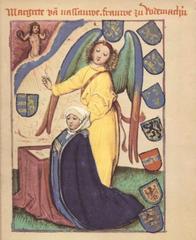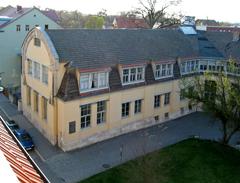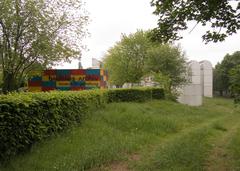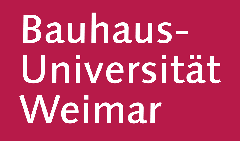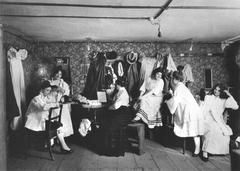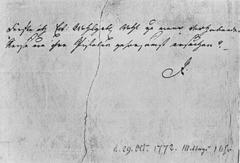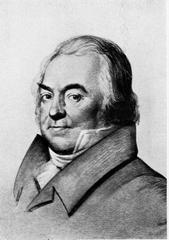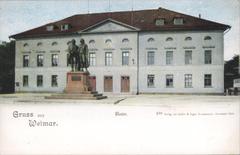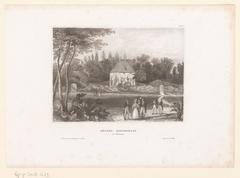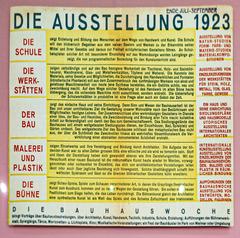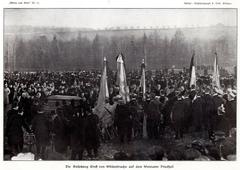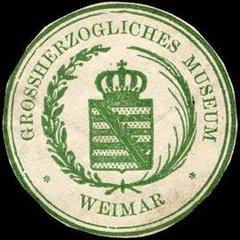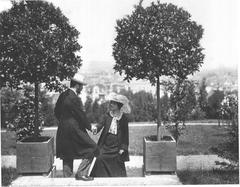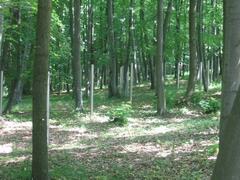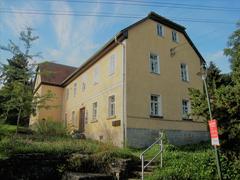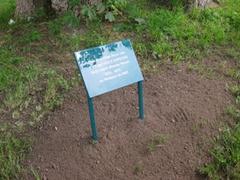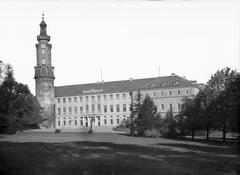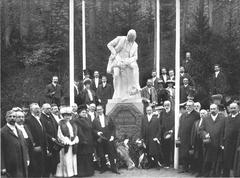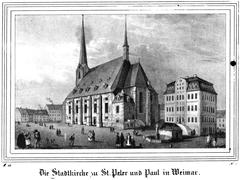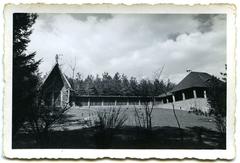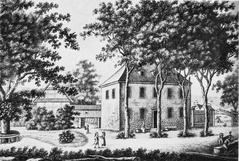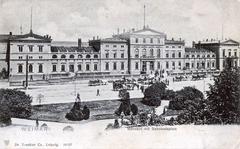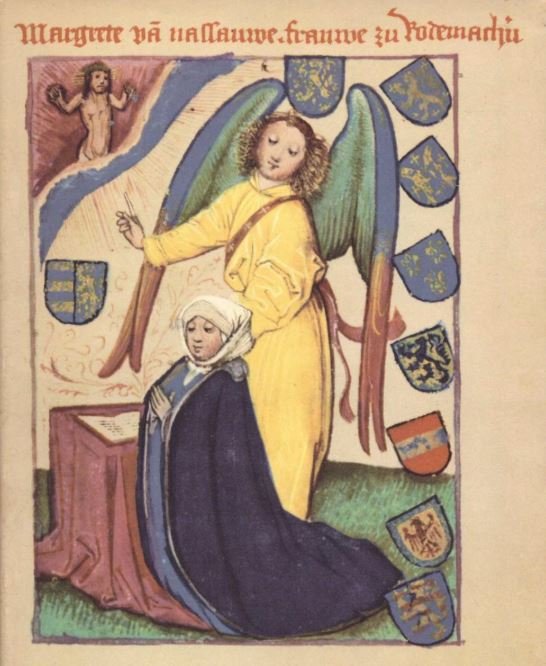
Duchess Anna Amalia Library Visiting Hours, Tickets, and Guide to Weimar Historical Sites
Date: 14/06/2025
Introduction: A Beacon of European Literary Heritage
Nestled in the heart of Weimar, Germany, the Duchess Anna Amalia Library (Herzogin Anna Amalia Bibliothek) stands as a monument to European literary heritage, Enlightenment ideals, and architectural splendor. Founded in the late 17th century and transformed under the visionary patronage of Duchess Anna Amalia in the 18th century, the library is globally renowned for its exquisite Rococo Hall and its pivotal role in the cultural blossoming of Weimar Classicism. Today, as a UNESCO World Heritage Site, it continues to offer visitors an immersive journey into Germany’s artistic and intellectual legacy.
This guide provides an in-depth look at the library’s history, architectural highlights, practical visiting details, and tips for exploring Weimar’s cultural landscape. For up-to-date information, consult resources such as Klassik Stiftung Weimar, fromplacetoplace.travel, and Triphobo.
Table of Contents
- Historical Overview
- Visiting the Duchess Anna Amalia Library
- FAQs
- Conclusion & Visitor Summary
- References
Historical Overview
Origins and Early Development
The library’s foundation dates back to 1691, when Duke Wilhelm Ernst of Saxe-Weimar-Eisenach began systematically expanding the ducal book collection. Its roots, however, reach further, to the mid-16th century, when 500 volumes from the Saxon Prince Elector Frederick the Magnanimous’ collection remained in Weimar, following the transfer of the bulk to Jena after the Battle of Mühlberg in 1547 (Klassik Stiftung). By 1712, the library was opened to scholars, making it one of Germany’s earliest publicly accessible princely libraries.
The Role of Duchess Anna Amalia
Duchess Anna Amalia (1739–1807) played a pivotal role in the library’s transformation. As regent for her son, Carl August, she championed the arts and intellectual life in Weimar. In 1761, she ordered the conversion of her residence, the Green Castle (Grünes Schloss), into a library. The Rococo Hall, designed by August Friedrich Straßburger and completed in 1766, provided a magnificent setting for the growing collection (fromplacetoplace.travel). Anna Amalia’s patronage attracted key Enlightenment figures, including Christoph Martin Wieland, whose Shakespeare volumes became foundational to the collection (liquisearch.com).
Weimar Classicism and the Library’s Golden Age
The late 18th and early 19th centuries marked the library’s golden age, coinciding with the flourishing of Weimar Classicism. Under Anna Amalia and Carl August, Weimar became a hub for German intellectual life. The appointment of Johann Wolfgang von Goethe as library director in 1797 was transformative. Goethe, serving until his death in 1832, oversaw the collection’s growth and its emergence as a center of German literary life, with holdings expanding to more than 80,000 volumes. The library’s special collections—such as the world’s largest Faust collection—were developed during this era (fromplacetoplace.travel; tourispo.com).
Architectural and Artistic Significance
The architectural highlight is the Rococo Hall: an elegant, three-story oval chamber with galleries, intricate stucco work, and portraits of cultural luminaries like Goethe, Herder, and Wieland (Klassik Stiftung; simskultur.eu). The hall, housing around 40,000 volumes, is celebrated as one of Europe’s most beautiful library interiors.
Adjacent to the historic complex is the modern Study Center, nicknamed “the Cube,” which offers open-access reading areas and over 160,000 books for research, seamlessly blending tradition and innovation (petitfute.co.uk).
Fire and Restoration
A catastrophic fire on September 2, 2004, destroyed around 50,000 books and damaged another 118,000, including priceless works such as a 1534 Luther Bible. International support and meticulous restoration efforts saved and restored thousands of damaged items (spiegel.de). The Rococo Hall reopened in 2007, symbolizing cultural resilience (Klassik Stiftung; fromplacetoplace.travel).
UNESCO Recognition
In 1998, the library and other Weimar Classicism sites were designated as a UNESCO World Heritage Site, affirming its global cultural significance and its embodiment of Enlightenment values (UNESCO).
Visiting the Duchess Anna Amalia Library
Visiting Hours & Tickets
-
Rococo Hall:
- April to October: Tue–Sun, 10:00 AM – 6:00 PM
- November to March: Tue–Sun, 10:00 AM – 4:00 PM
- Closed Mondays and public holidays
- Check the official website for updates and seasonal changes.
-
Ticket Prices:
- Adults: €8–12 (varies by type of visit)
- Reduced (students, seniors): €5–6
- Children under 18: Free
- WeimarCard: €32.50 for 48 hours, includes entry to major sites
-
Reservations:
- Entry to the Rococo Hall is by timed ticket only; advance booking is essential due to limited daily capacity.
- Tickets available online or at the entrance, subject to availability.
Accessibility
- The library is wheelchair accessible; elevators and ramps are available.
- Barrier-free restrooms and assistance upon request.
- The Cube Study Center is fully accessible.
Guided Tours & Special Events
-
Guided Tours:
- Access to the Rococo Hall is exclusively via guided tours.
- Tours are usually in German; inquire about English-language tours or audio guides.
- Advance booking is recommended, especially for groups.
-
Events & Exhibitions:
- The library hosts rotating exhibitions, lectures, and concerts.
- The Renaissance Hall features a free permanent exhibition on the 2004 fire and restoration (simskultur.eu).
Travel Tips & Getting There
- Location: Anna-Amalia-Platz 5, 99423 Weimar, Germany
- Centrally located; easily reached by foot from Weimar’s city center and other attractions.
- Public transport: Bus lines 1 and 3 stop nearby; Weimar’s main train station is a short walk away.
- Parking is available in adjacent lots.
Additional Tips
- Visit on weekday mornings to avoid crowds.
- Photography is generally restricted in the Rococo Hall; inquire about current policies.
- Lockers are available for personal items.
- Plan for at least 2–3 hours to enjoy the library and nearby sites.
Nearby Attractions
- Goethe National Museum
- Schiller Museum
- Bauhaus Museum Weimar
- Weimar Historical Cemetery
- Park an der Ilm
- Hoffman’s Bookstore – a historic literary shop frequented by Goethe and Schiller (Tall Girl Big World)
FAQs
Q: What are the Duchess Anna Amalia Library’s opening hours?
A: Tuesday to Sunday, typically 10:00 AM–6:00 PM (summer), 10:00 AM–4:00 PM (winter); closed Mondays and holidays.
Q: How do I book tickets?
A: Reserve online for a timed entry slot; on-site tickets are limited and may not be available during peak periods.
Q: Are guided tours available in English?
A: Tours are mainly in German; English audio guides or materials may be available—check in advance.
Q: Is the library wheelchair accessible?
A: Yes, with ramps, elevators, and barrier-free restrooms.
Q: Can I take photos inside the library?
A: Photography is restricted in the Rococo Hall; ask at the entrance for current guidelines.
Q: Are there events or exhibitions for families?
A: Yes, many exhibitions are family-friendly and educational programs are available for children.
Conclusion & Visitor Summary
The Duchess Anna Amalia Library is a living testament to Weimar’s enduring cultural legacy. From its origins as a ducal book collection to its transformation into a center of Enlightenment thought under Duchess Anna Amalia, and through its association with Goethe and other luminaries, the library encapsulates the spirit of German Classicism. Its Rococo Hall is a masterpiece of 18th-century architecture, while the modern Cube demonstrates the fusion of tradition and innovation.
Restored after the devastating 2004 fire, the library stands as a beacon of resilience and cultural preservation. Today, visitors can explore its historic interiors, engage with rich collections, and experience the intellectual vibrancy that continues to define Weimar.
Tips for Your Visit:
- Book tickets in advance, especially for the Rococo Hall.
- Allocate enough time for tours and exhibitions.
- Combine your visit with other Weimar attractions for a deeper cultural experience.
- Download the Audiala app for guided tours and cultural content.
Plan your journey and immerse yourself in the rich heritage of Weimar—an experience that will inspire lovers of literature, architecture, and history alike.
References
- Klassik Stiftung Weimar – Duchess Anna Amalia Library History
- simskultur.eu – Library Visitor Guide
- Triphobo – Duchess Anna Amalia Library Travel Guide
- Revisionist.net – Herzogin Anna Amalia Library Overview
- UNESCO World Heritage Centre – Classical Weimar
- fromplacetoplace.travel – Duchess Anna Amalia Library
- petitfute.co.uk – Duchess Anna Amalia Library Visitor Info
